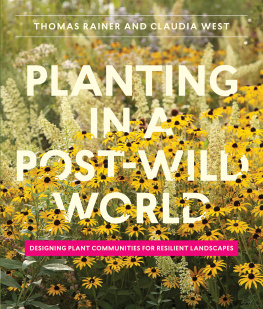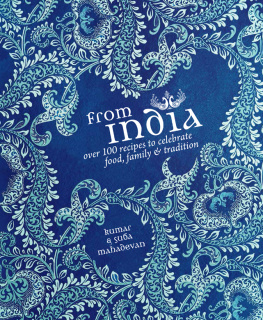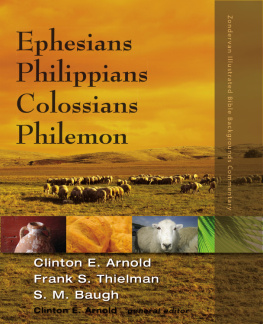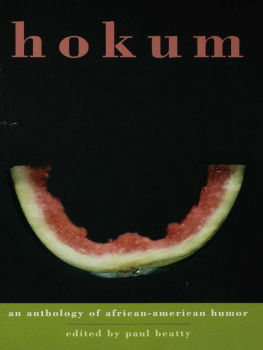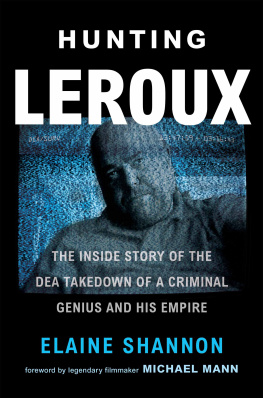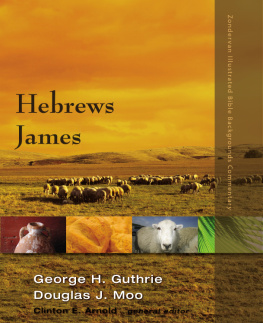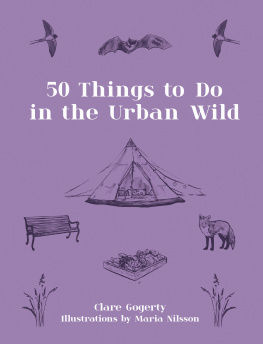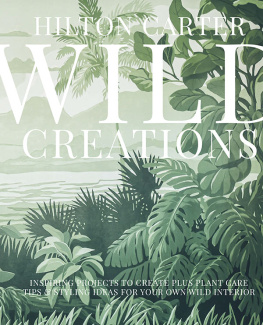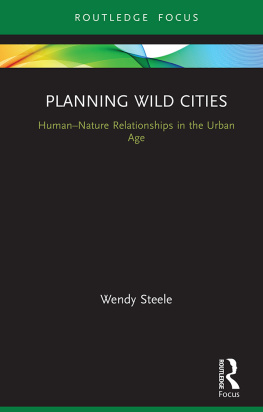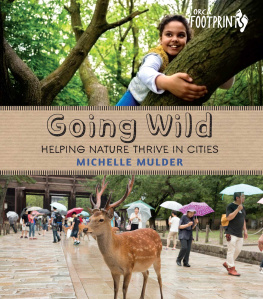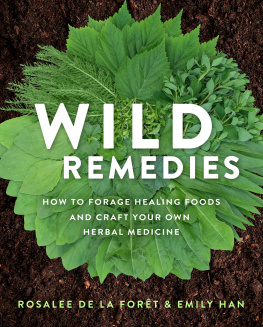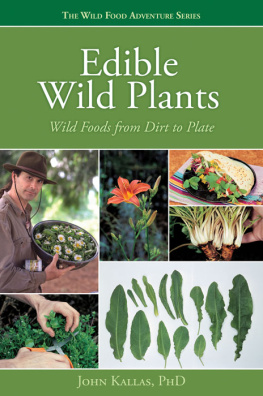
Site-appropriate vegetation densely covers every inch of soil, creating a highly functional, emotionally accessible, and resilient plant community.
PLANTING
IN A
POST-WILD
WORLD
DESIGNING PLANT COMMUNITIES FOR RESILIENT LANDSCAPES
THOMAS RAINER AND CLAUDIA WEST
Timber Press
Portland, Oregon

White wood asters creep underneath Japanese beech ferns, densely covering the ground.
CONTENTS
PREFACE
THOMAS
In the summer before my second grade year, we moved to just outside of Birmingham, Alabama. My family bought a house in a new development on the edge of town. The summer we moved in, there were half a dozen other houses on our street, with as many empty woodlots. But within a couple of years, the woodlots disappeared. New houses, new families, and new children filled in the street. With no more woodlots to explore, I turned my attention to the enormous forested tract of land that bordered our backyard. The steel company owned the land, and since they did not manage or tend it, I spent my weekends and summers romping through those woods with a pack of irreverent boys from the neighborhood. The Piedmont forest stretched several square miles in all directions and connected with even larger tracts of undeveloped land beyond. We spent our days building lean-tos and forts, evading enemies (usually younger sisters), foraging muscadines and dewberries, and exploring the outer boundaries of these seemingly endless wilds.
My earliest memory of wild plants was of the rich spaces they created. A tangled thicket of sparkleberry trees formed narrow paths which we moved through like rabbits; a massive southern red oak was our meeting spot; and perhaps most sacred of all was a grove of beeches whose canopy created a dome over a wide creek that flowed between two ridges. We would descend into that bowl in silence, entranced by the light cast through the glowing, absinthe leaves.
By the time I was in high school, developers had purchased most of that land. The ridges of the forest were dynamited and pushed into the valleys. The streams where we caught crawdads were forced into pipes that flow underneath parking lots. Where there once was a rich mosaic of woodland plant communities, there are now housing developments and big box retail stores.
My story is not unique. Every day and in every corner of the earth, acre after acre of wilderness disappears. For me, the loss of the only authentic landscape I knew as a child is something that stays with me. It roots me in the reality that the wild spaces we have left are but tiny islands surrounded by an ever-growing ocean of developed landscapes. There is no going back. But the task that faces us now is not to mourn what is lost, but to open our eyes to see the spaces that surround us every day: our yards, roads, office parks, malls, woodlots, parks, and cities.
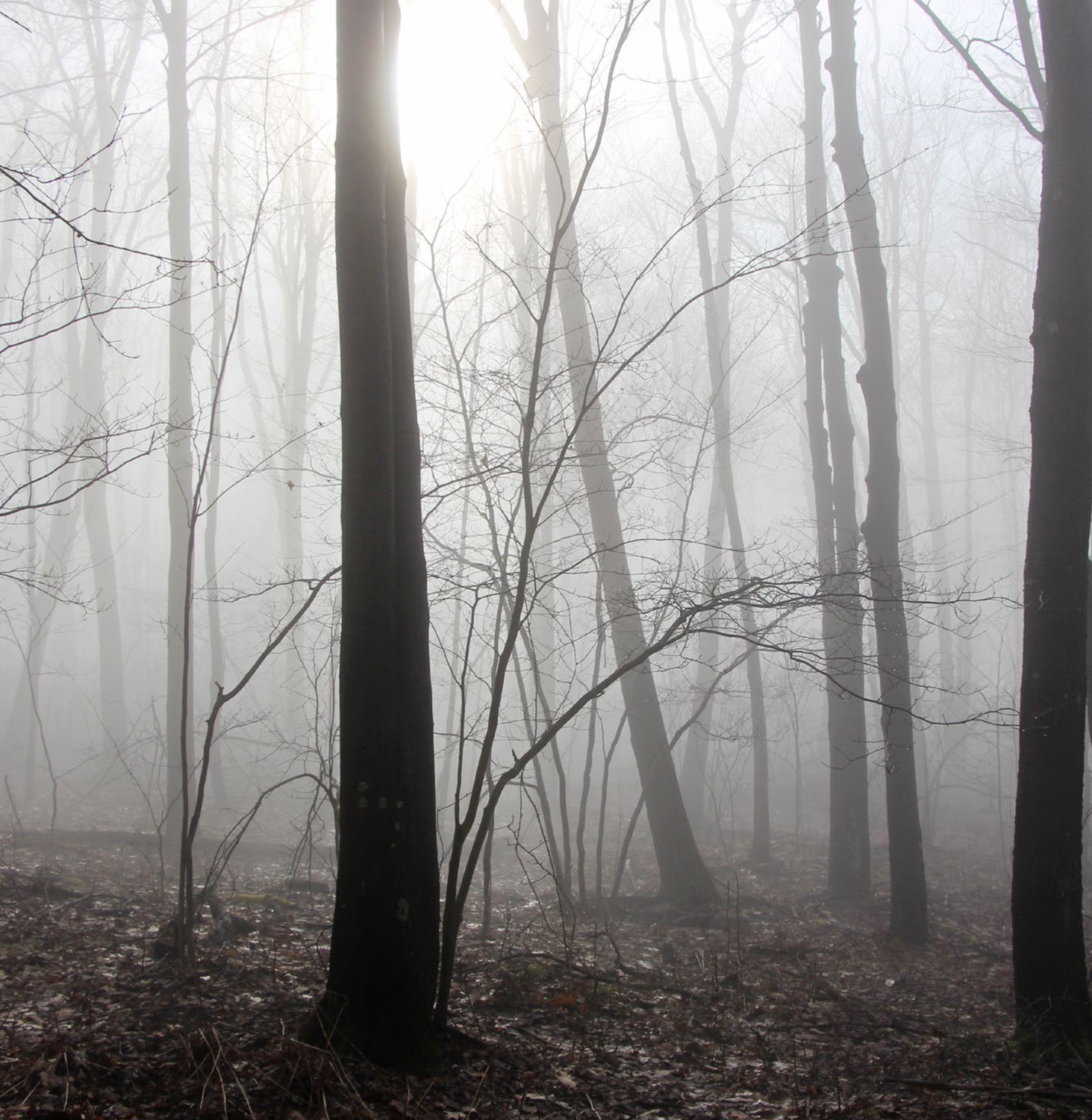
Appalachian forest in late winter.

Where heavy industry once charred the ground, wild plants now thrive. The Sdgelnde in Berlin, Germany, allows us to experience the inexhaustible resource of wildness in the vibrant center of a European metropolis.
CLAUDIA
East Germany in the 1980s was a grey and polluted world. The rivers of my childhood had a different color every weekdepending on the color dye used in the textile factories nearby. I remember entire landscapes being ripped out just to get to the shallow layers of soft coal desperately needed to keep a fragile economy afloat, and to pay back reparations for the Second World War. Uranium mines surrounded my hometown and some years (I remember the year of Chernobyl) mushrooms grew twice as large as they normally would. The East German regime relied on intense agriculture practices. Chemical warfare on weeds and pests was so common, nobody ever bothered to bring in the clothes hanging to dry before heavy yellow sprayer planes dumped pesticides across our fields and gardens. Natural areas commonly turned into military training grounds, and nature was reduced to ruderal vegetation and our small but intensely cultivated Schrebergrten.
All this changed in 1989 and 1990 with the fall of the Berlin Wall. The one lesson we learned was how resilient nature really is. Visiting the industrial core of former East Germany now is a life-changing experience: we catch safe-to-eat trout in the once highly toxic streams. Tourists from all over the world come to the new landscape of central Germanya landscape of clear lakes and shady forests, filled with resorts and expensive yachts. Who would have ever predicted the return of the European wolf to central Europes new wilderness? Nature is tough, tenacious, and buoyant and it is never too late: this is perhaps the clearest lesson learned when I reflect on the last few years of my young life. Disturbed landscapes heal fast, driven by the powerful and ever-present spirit of the wild. The process of restoration and succession can be very quick if we guide and work with it. Even the most depressing moonscape might be Eden for some plant specialist. Dont tell me you cant find a plant for a challenging siteplants grow on the moon. I have seen it!

The irrepressible spirit of plants: a seeded mix of sweet pea (Lathyrus odoratus) and fescues glows in a parking lot in Boulder, Colorado.
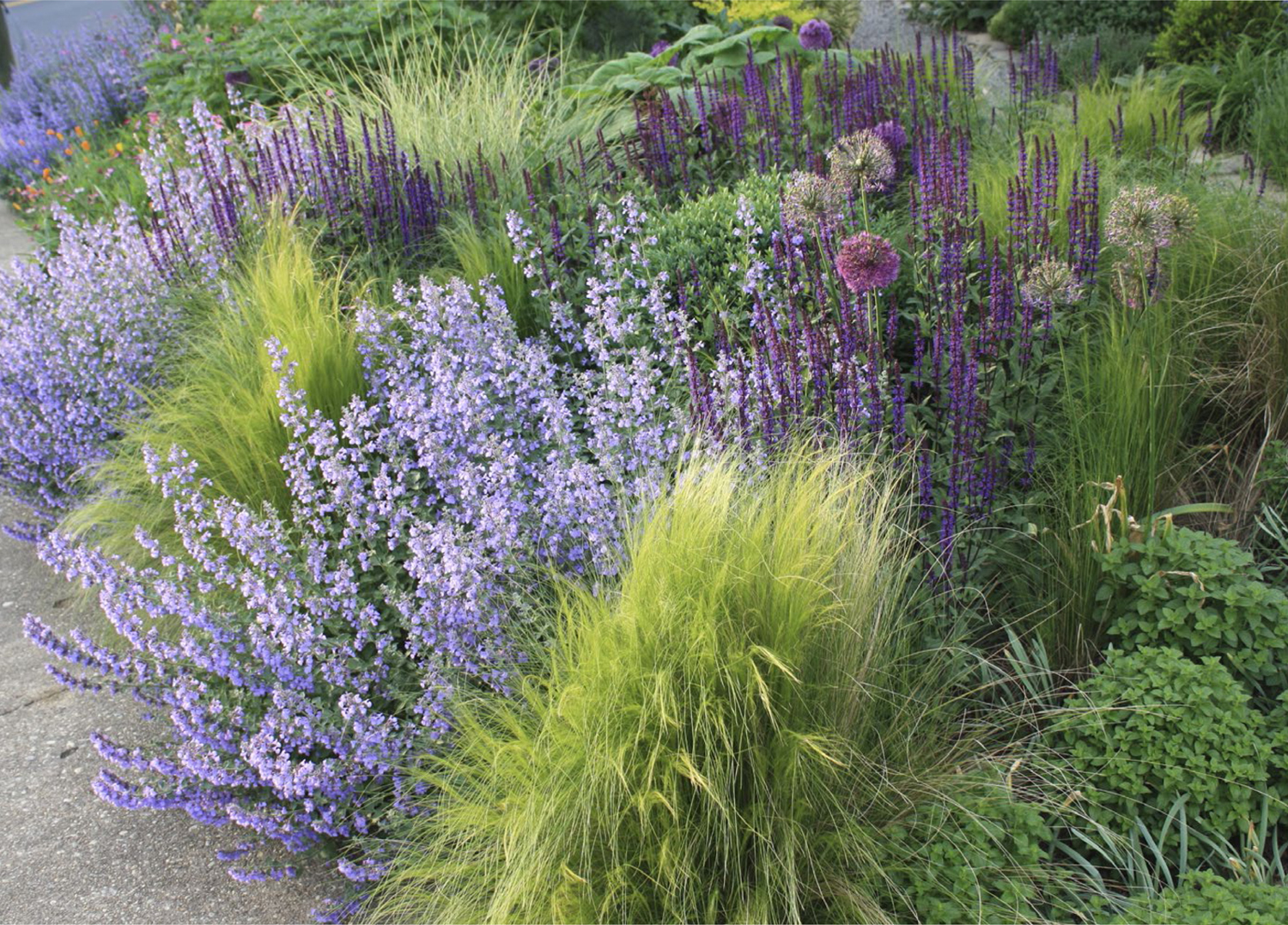
Mexican feather grass (Nassella tenuissima), catmint (Nepeta faassenii Walkers Low), meadow sage (Salvia nemorosa Caradonna), and alliums intermingle in this mixed perennial bed in author Thomas Rainers garden.
We come to this book representing two different continents and two different experiences of nature. The North American perspective still has a memory of wilderness; the European perspective is immersed in an entirely cultured landscape. Thomass story is one of nature lost; Claudias is one of nature regained. This combined perspective perfectly describes the tension in which nature now exists: its continued disappearance in the wild; its expanded potential in urban and suburban areas. Wild spaces may be shrinking, but nature still exists. It is the alligator swimming in the storm water detention pond; it is Paulownia growing in the alley; it is endangered sumac that reappears on the military bombing grounds; it is the meadow planted on top of a skyscraper.
We are grounded in the reality of todays environmental challenges. Yet we are entranced by the potential of plants in our human landscapes. And we believe in the power of design. This book is an optimistic call to action, a manifesto dedicated to the idea of a new naturea hybrid of both the wild and the cultivatedthat can flourish in our cities and suburbs, but it needs our help. It requires us to lose the idea that nature exists apart from us, and to embrace the reality that nature in the future will require our design and management.
Next page
